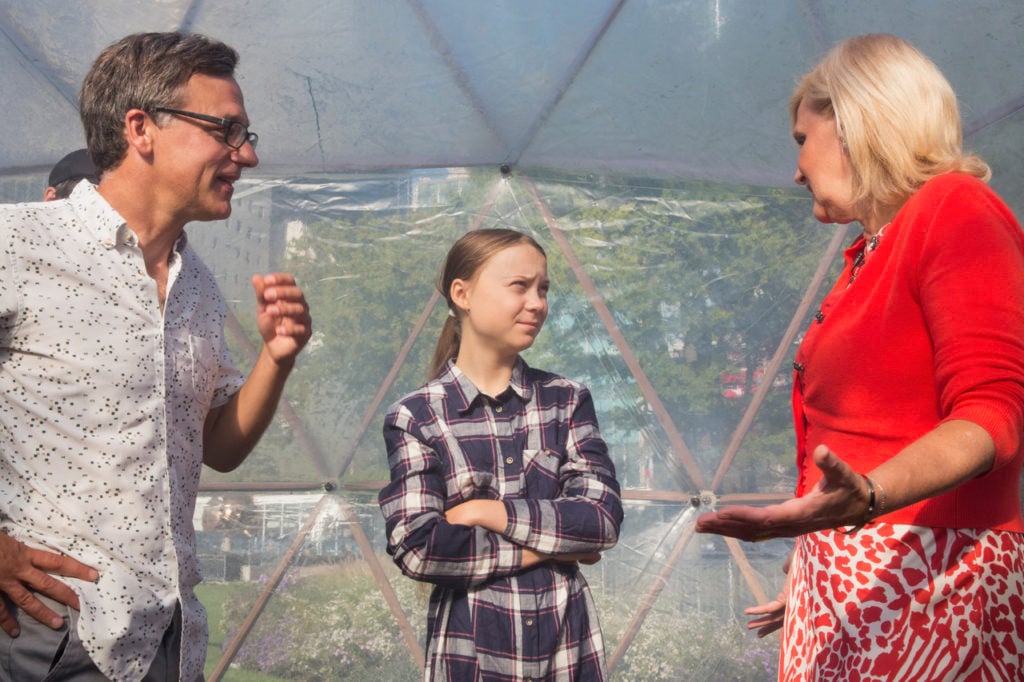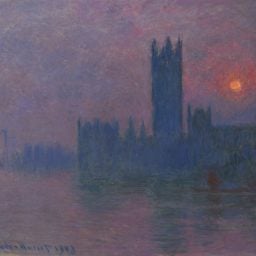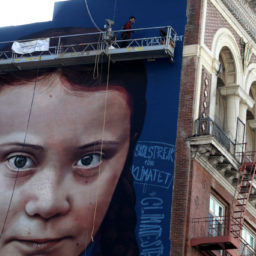“The thing about air pollution is that most of it is invisible,” British artist Michael Pinsky told artnet News. In an effort to effectively illustrate its dangers, he’s joined world leaders gathered at the UN Climate Action Summit to present his interactive sculptural installation Pollution Pods, a set of five enclosed geodesics domes that replicate air quality at five sites around the world.
This weekend, the project had a very high-profile visitor: Sixteen-year-old Swedish environmental activist Greta Thunberg, whose searing speech at the UN on Monday was heard around the world. “We were happy that she came around because things have gotten quite crazy for Greta,” Pinsky said. He wasn’t sure what Thunberg thought of the work, but “she certainly responded to each atmosphere with a certain amount of horror.”
From the fresh air of rural Norway to the toxic fumes of heavily populated cities in China and India, the piece is meant to be a wake-up call about the deteriorating state of our planet. Pinsky is taking part in the summit through the invitation of the World Health Organization, having previously shown his interactive Pollution Pods last September at their first conference on air pollution. (The international tour of the work is being overseen by art nonprofit Cape Farewell, which looks to fight climate change through culture.)
Thunberg, who traveled from Europe for the summit on a zero-emission yacht, visited the pods ahead of an emotional speech to world leaders. “People are suffering,” she said, breaking into tears. “People are dying. Entire ecosystems are collapsing. We are at the beginning of a mass extinction and all you can talk about is money and fairy tales of eternal economic growth. How dare you.”
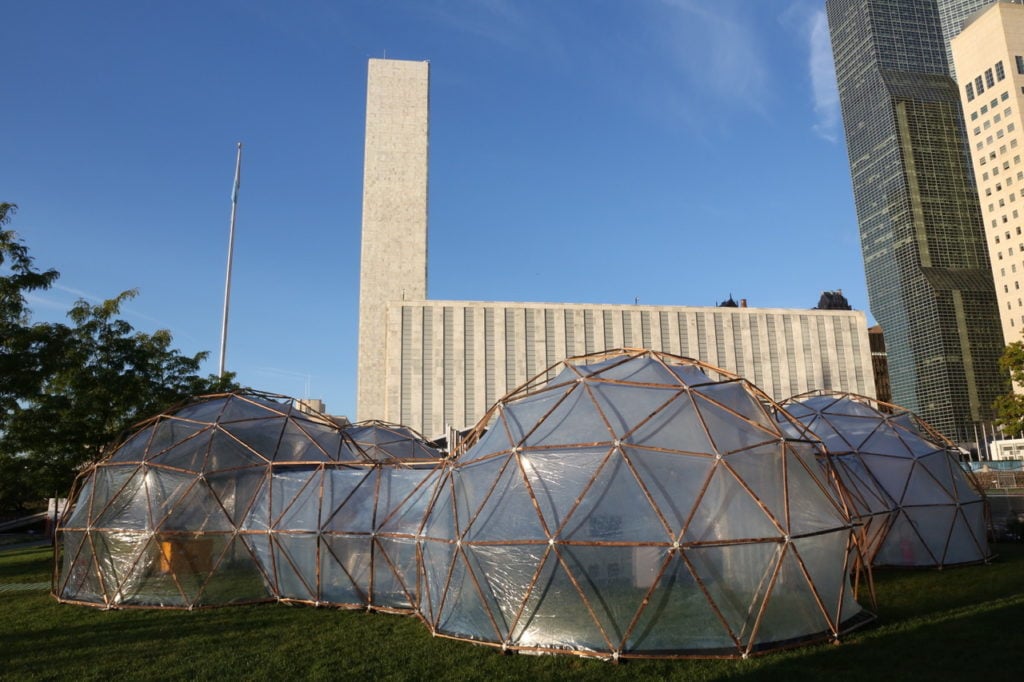
Michael Pinsky, Pollution Pods at the 74th United Nations General Assembly in partnership with the World Health Organization. Photo by Ben Hartschuh.
Pinsky is proud to have brought his work to the UN, noting that way back in 1972, the first UN Conference on the Human Environment declined to show Gustav Metzger’s Project Stockholm, an artwork in which the exhaust fumes from 120 running cars are directed into an enclosed tent.
“It’s taken almost 50 years to be able to do a piece like this at the UN!” Pinsky said. (Metzger finally realized his work at the Sharjah Biennial in 2007.)
Pinsky hopes that by focussing on air pollution, an easily grasped concept that people encounter in their everyday lives, he can help push politicians to make legislative changes that will aid in the battle against climate change. “I’ve done several pieces about climate change over the last decade, but it was really hard to get people to engage with its epic nature,” he explained.
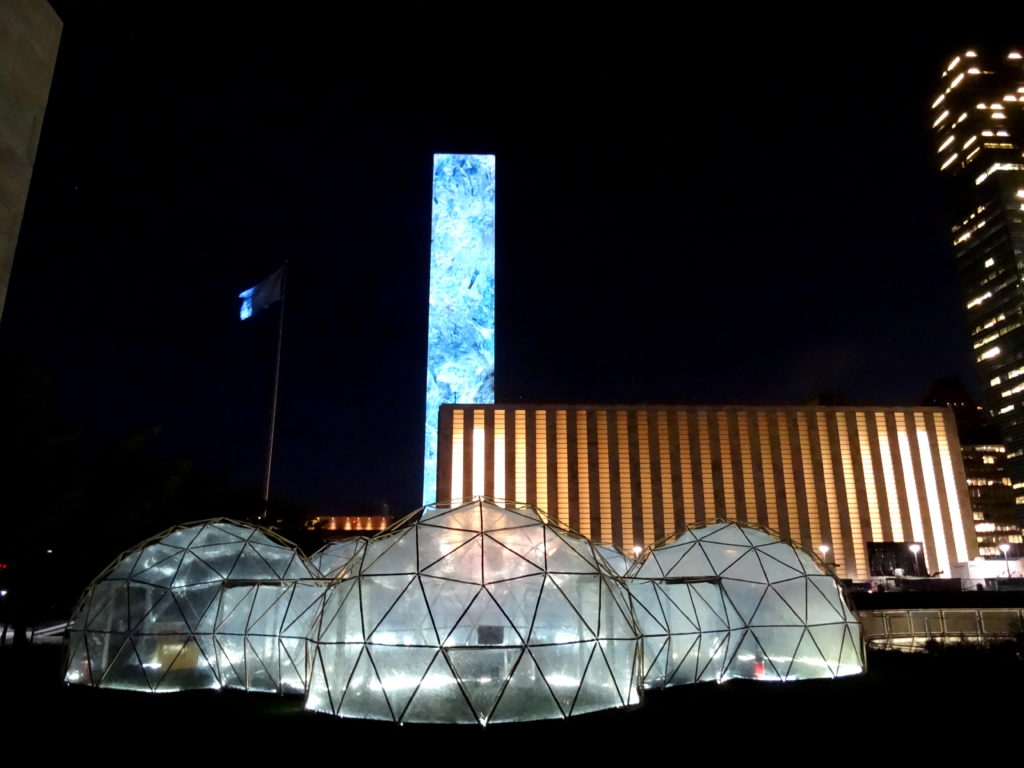
Michael Pinsky, Pollution Pods at the 74th United Nations General Assembly in partnership with the World Health Organization. Photo by David Buckland of Cape Farewell.
“In the 1950s, London had really really terrible air pollution because people were still burning coal to heat their houses,” Pinsky said. After an estimated 4,000 people died during the Great Smog of 1952, the government passed the Clean Air Act 1956, and conditions improved dramatically.
“Legislation can change these things almost instantaneously,” the artist insisted—fast enough to produce positive results for politicians only in office for a few years and therefore focused on short-term gains. “Today in China, the combination of industrial pollution and domestic heating from wood and coal produces a very similar smog to the one they had in London.”
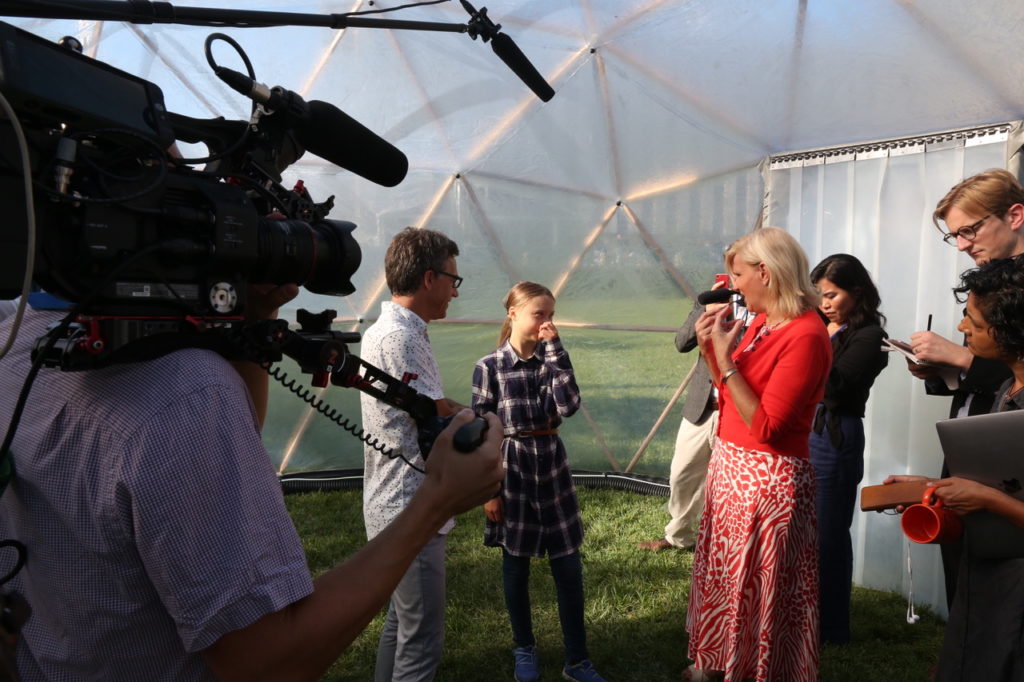
Greta Thunberg visits Michael Pinsky’s Pollution Pods at the 74th United Nations General Assembly in partnership with the World Health Organization. Photo by Ben Hartschuh.
Among the five sites featured, Pollution Pods simulates the fresh air of Tautra, Norway, because that was the first country where the work debuted, as well as the atmosphere of London, the artist’s hometown. Pinsky also chose Beijing because China is notorious for poor air quality, and New Delhi because it actually has the worst air pollution in the world. The final city is São Paolo, where air quality is greatly affected by burning ethanol fuel, which has a unique, vinegary, almost fruity smell.
The piece demonstrates the deleterious physical effects of air pollution, but without actually being bad for your health—an early version of the project saw the artist running a diesel engine to generate real fumes, but Pinsky has since teamed up with International Flavors and Fragrances to develop convincing replicas instead. “They got a perfumer who lives in each of the countries to make up the scent of each place,” he said.
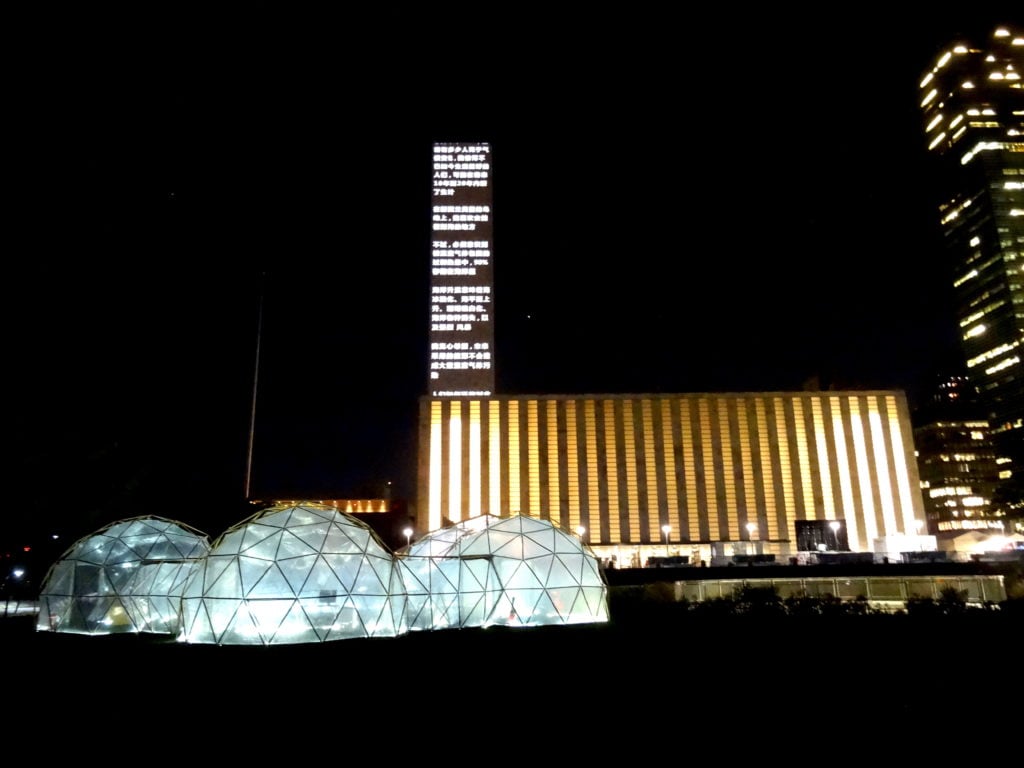
Michael Pinsky, Pollution Pods at the 74th United Nations General Assembly in partnership with the World Health Organization. Photo by David Buckland of Cape Farewell.
As the conference heads into its final day, Pinsky has been in touch with several representatives for heads of state who are interested in visiting the pods—but none have done so yet. “They are worried about sweating and smelling of pollution during the conference,” he explained.
The Pollution Pods are completely safe. Still, “it’s still a pretty visceral experience,” Pinsky admitted. “People don’t feel that well when they come out of it; they’re coughing and sweating.”
See more photos of the work installed at the UN below.
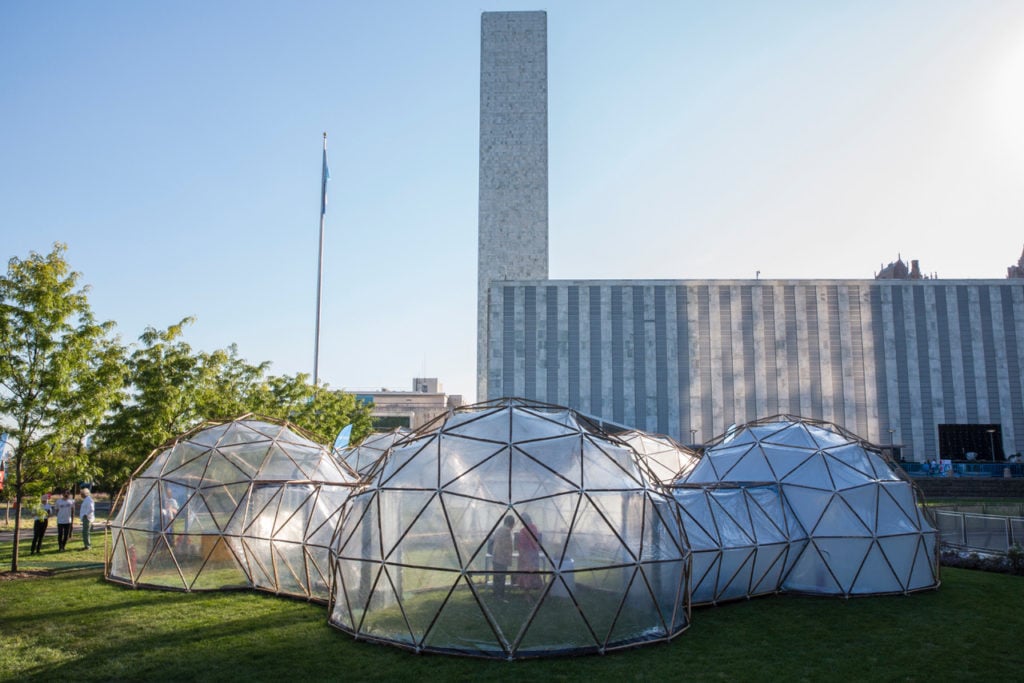
Michael Pinsky, Pollution Pods at the 74th United Nations General Assembly in partnership with the World Health Organization. Photo by Ben Hartschuh.

Michael Pinsky, Pollution Pods at the 74th United Nations General Assembly in partnership with the World Health Organization. Photo by David Buckland of Cape Farewell.
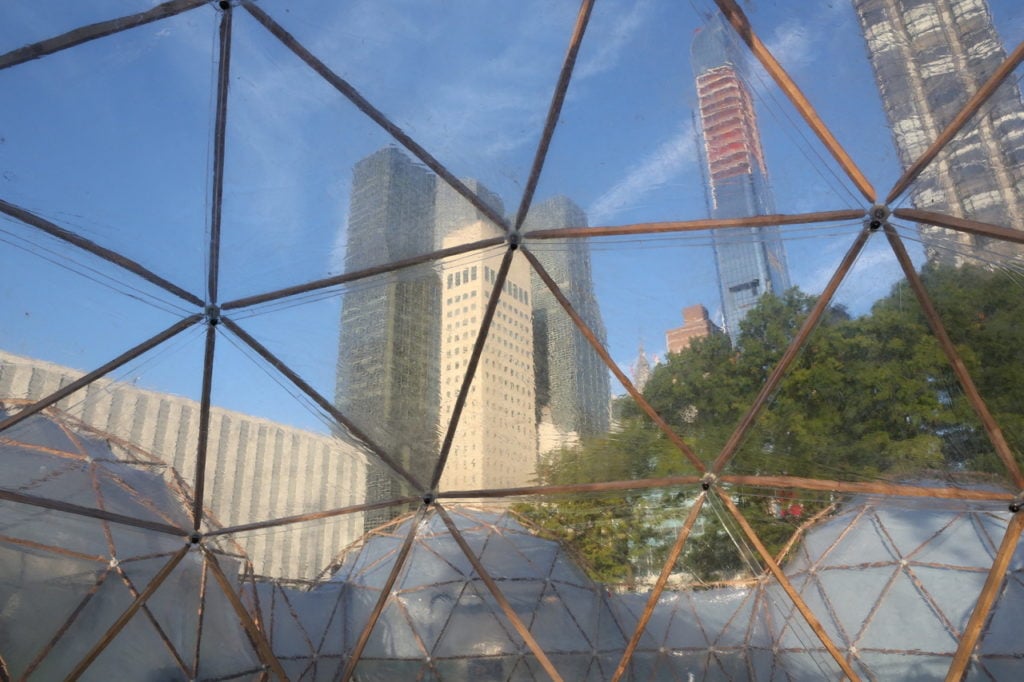
Michael Pinsky, Pollution Pods at the 74th United Nations General Assembly in partnership with the World Health Organization. Photo by Ben Hartschuh.
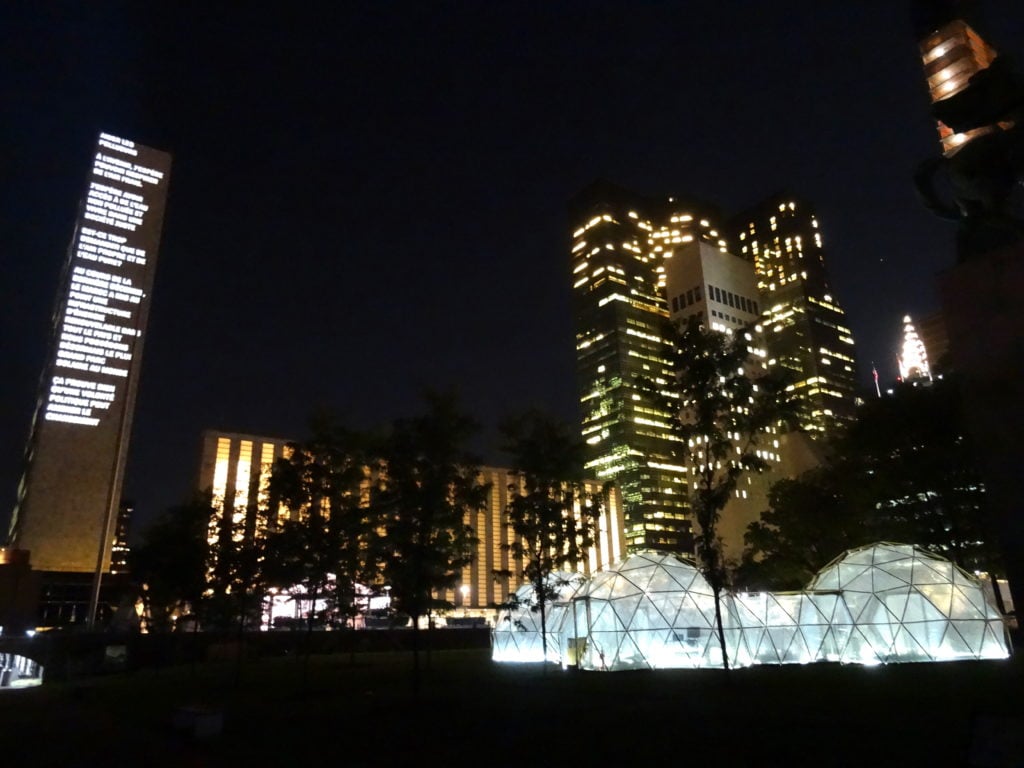
Michael Pinsky, Pollution Pods at the 74th United Nations General Assembly in partnership with the World Health Organization. Photo by David Buckland of Cape Farewell.
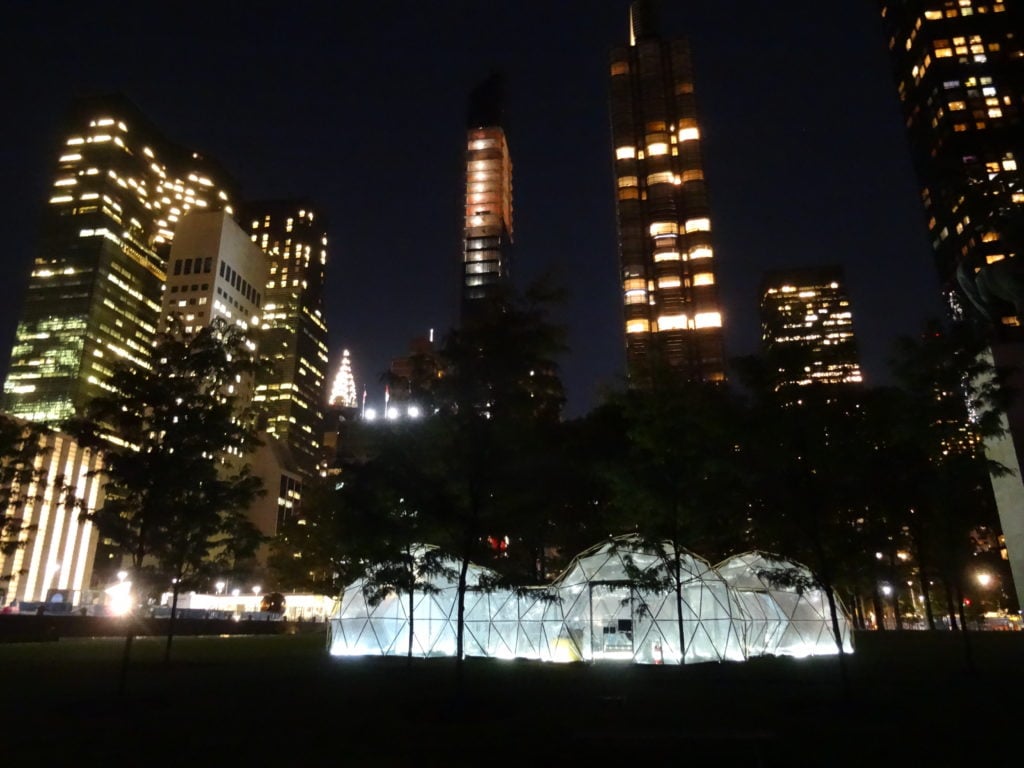
Michael Pinsky, Pollution Pods at the 74th United Nations General Assembly in partnership with the World Health Organization. Photo by David Buckland of Cape Farewell.
